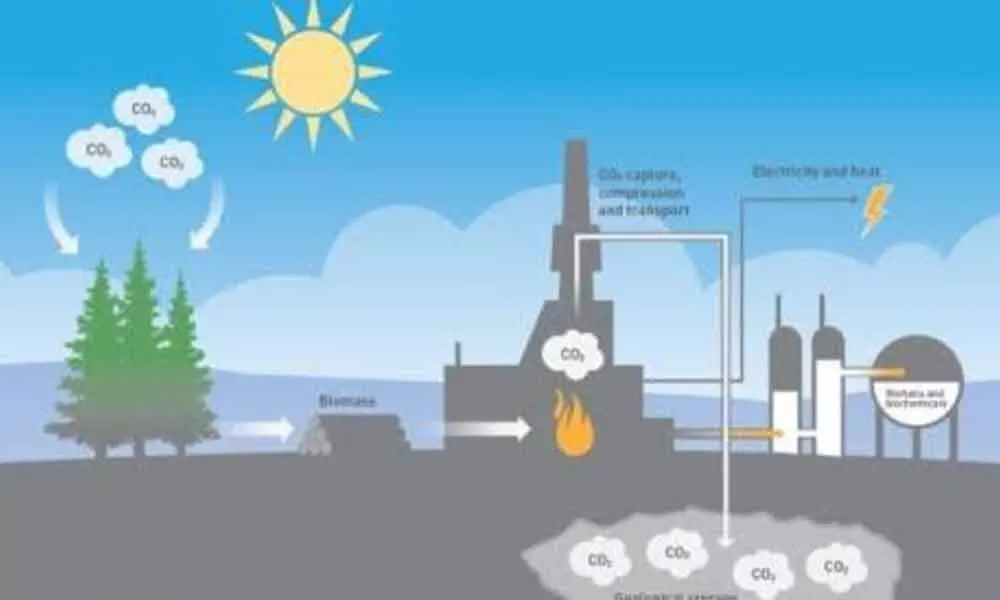Just In
New technology removes carbon dioxide from the air: Study


Researchers have developed a new technology to capture carbon dioxide from a stream of air - virtually at any concentration level - an advance that may pave the way for new strategies to reduce atmospheric greenhouse gas levels.
Researchers have developed a new technology to capture carbon dioxide from a stream of air - virtually at any concentration level - an advance that may pave the way for new strategies to reduce atmospheric greenhouse gas levels.
The researchers from the Massachusetts Institute of Technology (MIT) in the US said that while most methods of removing carbon dioxide from a stream of gas required higher concentrations - such as those found in the flue emissions from fossil fuel-based power plants - the new method could suck out the gas even when it was present in very low concentrations. They added that the method required significantly energy, and could even suck out the greenhouse gas at the roughly 400 parts per million currently found in the atmosphere.
In a study, published in the journal Energy and Environmental Science, the researchers described the device as a large, specialized battery with a stack of electrodes that absorbs carbon dioxide from the air passing over its surface as it was being charged up, and then released the gas as it was being discharged. The researchers said that the device alternated between charging and discharging cycles.
During the charging cycle, they said that fresh air was fed into the system, and concentrated carbon dioxide was blown out during the discharging. The study noted that a chemical reaction takes place at the surface of each of a stack of electrodes as the battery charges. The researchers said that the electrodes are coated with a compound called polyanthraquinone compounded with carbon nanotubes.
The study noted that the electrodes have a natural affinity for carbon dioxide and readily reacted with its molecules in the airstream or feed gas. When the battery is discharged, the researchers said that the process ejects a stream of pure carbon dioxide, and also provides part of the power needed for the whole system. The device operates at room temperature and normal air pressure, they said.
"The greatest advantage of this technology over most other carbon capture or carbon absorbing technologies is the binary nature of the adsorbent's affinity to carbon dioxide," said study co-author Sahag Voskian of MIT. He said that the electrode material, by its nature, "has either a high affinity or no affinity whatsoever," depending on the battery's state of charging or discharging.
"This binary affinity allows capture of carbon dioxide from any concentration, including 400 parts per million, and allows its release into any carrier stream, including 100 per cent CO2," Voskian said.
According to the researchers, the pure carbon dioxide stream could be compressed and injected underground for long-term disposal, or even made into fuel through a series of chemical and electrochemical processes. Voskian said that the new system is energy efficient compared to existing methods - consistently using about one gigajoule of energy per ton of carbon dioxide captured. He said that other existing methods have energy consumption which vary between 1 to 10 gigajoules per ton, depending on the inlet carbon dioxide concentration.

© 2024 Hyderabad Media House Limited/The Hans India. All rights reserved. Powered by hocalwire.com






